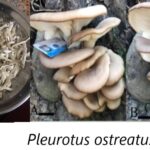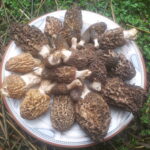Amanita mushrooms constitute a genus of fungi that includes both poisonous and edible species. While some Amanita mushrooms have ethnomycological importance and are consumed as food in certain cultures, it is crucial to exercise extreme caution when foraging, as some species are highly toxic and can be fatal if ingested. Amanita is the largest genus of basidiomycetes with more than 400 species.
Key points of Amanita mushrooms:
- Diversity and Toxicity The Amanita genus is diverse, with various species found worldwide. Some notable examples include Amanita muscaria (Fly Agaric) and Amanita phalloides (Death Cap). Several Amanita species contain toxins that affect the liver and kidneys, leading to severe illness or death. The Death Cap, in particular, is responsible for a significant number of mushroom poisoning cases globally.
- Edible Species: Despite the presence of toxic species, there are edible Amanita mushrooms that are consumed in certain regions. Amanita caesarea, also known as Caesar’s Mushroom, is one example. However, accurate identification by an experienced forager is essential to avoid confusion with toxic species.
- Distinctive Features: Amanita mushrooms often have distinctive features that aid in identification. These may include a ring (annulus) on the stem, a cup-like structure at the base (volva), and a cap that may be brightly colored, such as the red and white cap of Amanita muscaria.
- Cultural Significance: Amanita muscaria, in particular, has cultural significance in some indigenous societies. It contains psychoactive compounds and has been associated with rituals and traditions, especially in Siberian and northern European cultures.
- Foraging Safety: Due to the potential toxicity of Amanita mushrooms, it is strongly advised to avoid consuming them unless one is an experienced forager with a deep understanding of their characteristics. If unsure about the identification of a mushroom, it is safer to err on the side of caution and not consume it.
- Medical Attention: In the event of suspected mushroom poisoning, especially with Amanita species, seeking immediate medical attention is crucial. Early intervention can significantly improve the chances of positive outcomes. Some Amanita mushrooms are edible and even culturally significant, the presence of highly toxic species within the genus demands careful attention and expertise when foraging for wild mushrooms. As a general rule, individuals should be well-educated in mycology or seek guidance from experts before consuming any wild mushrooms, including those belonging to the Amanita genus.







